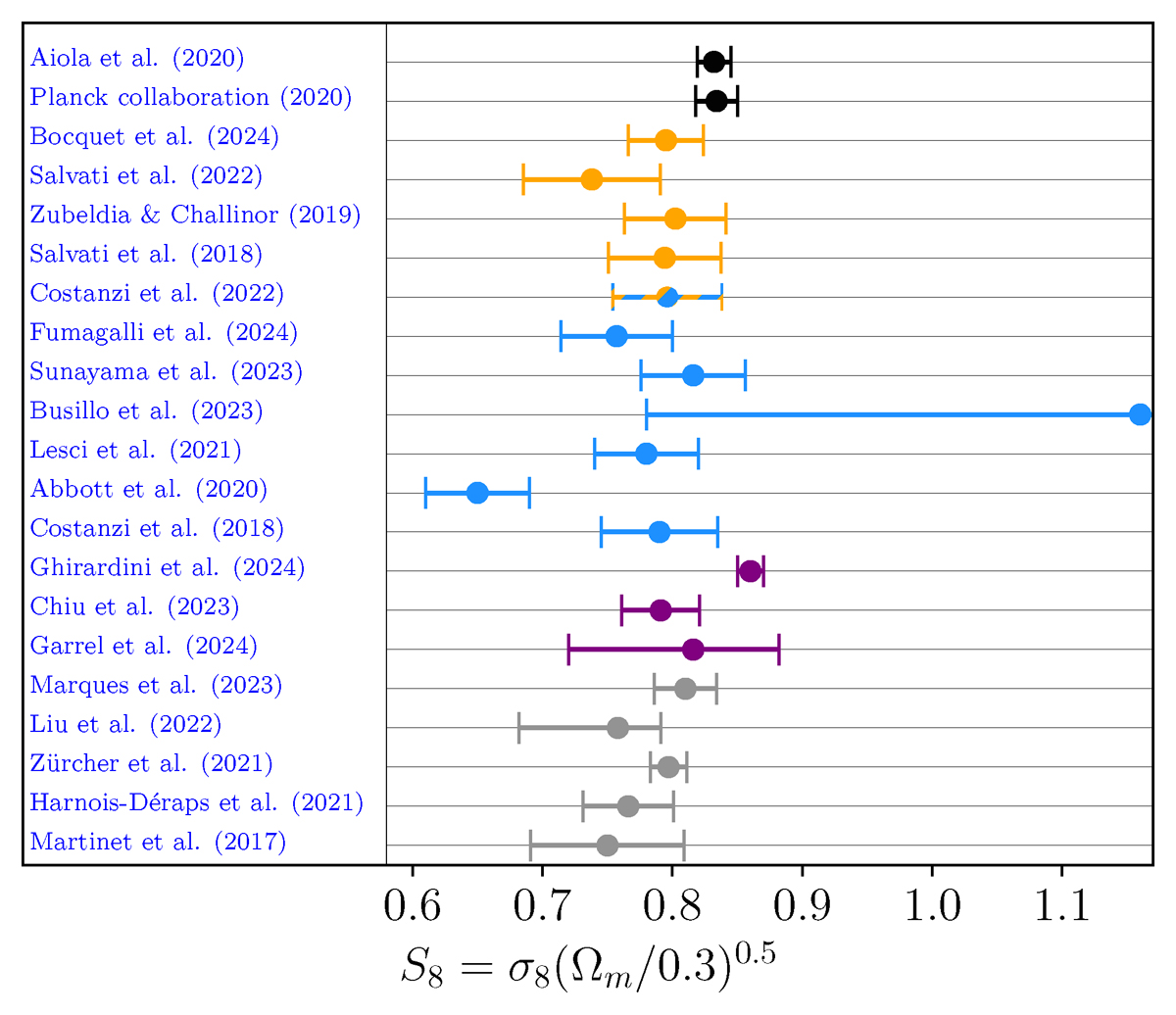Fig. 1.

Download original image
Values of S8 obtained from different surveys using the peaks of the matter density field (including cluster counts and weak lensing peaks) as a cosmological probe compared with the values obtained by the primary CMB anisotropies (in black). The ACT DR4 data (Aiola et al. 2020) is shown first and followed by Planck20. Constraints from cluster number counts are sorted by detection wavelength; each color is assigned to the same type of experiment. The millimeter wavelength is shown in yellow. We show the constraints from SPT with weak lensing mass calibration (Bocquet et al. 2024), Planck with weak hydrostatic mass calibration (Salvati et al. 2022), and Planck with a mass calibration based on CMB lensing (Zubeldia & Challinor 2019). We also show the combined Planck clusters and SZ power spectrum (Salvati et al. 2018). In blue, we show the constraints obtained from optically selected clusters. We present SDSS constraints Costanzi et al. (2019), Fumagalli et al. (2024), HSC constraints (Sunayama et al. 2024), DES constraints (Abbott et al. 2020), and KiDS constraints (Lesci et al. 2022). We also represent constraints obtained from the extreme value statistics of KiDS clusters Busillo et al. (2023). Those constraints are larger as extreme events are intrinsically rare. In the X-ray band, the results from eFEDS (Chiu et al. 2023), the XMM/XXL Garrel et al. (2022), and the eROSITA/eRASS1 results are shown in magenta (Ghirardini et al. 2024). The gray markers represent studies of the abundance of the peaks in the cosmic shear maps that strongly correlate with the presence of a galaxy cluster and probe cosmology at the nodes of the cosmic web: HSC (Marques et al. 2024; Liu et al. 2023), DES (Zürcher et al. 2022; Harnois-Déraps et al. 2021), and KiDS constraints (Martinet et al. 2018). We show that cosmological probes using the abundance of the nodes of the cosmic web find, on average, little hints for the existence of a growth tension.
Current usage metrics show cumulative count of Article Views (full-text article views including HTML views, PDF and ePub downloads, according to the available data) and Abstracts Views on Vision4Press platform.
Data correspond to usage on the plateform after 2015. The current usage metrics is available 48-96 hours after online publication and is updated daily on week days.
Initial download of the metrics may take a while.


